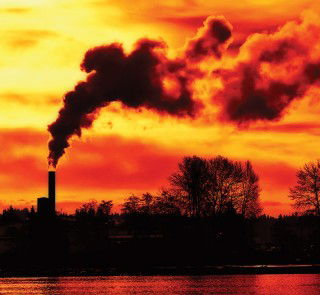During a recent seminar on "Is the End of Cement Production in the European Union Approaching?", organised by MEP Krzysztof Hetman at the European Parliament, the Management Board of the Polish Cement Association (PCA) outlined the magnitude of challenges facing the cement sector in Poland and Europe: in addition to growing imports from outside the EU, high energy prices and CO2 emission allowances, there is also decarbonisation – in particular the implementation of CCS technology.
In the era of investments in defence and energy transformation, including the prospect of building nuclear power plants, cement plays an increasingly strategic role, as highlighted during the seminar. In addition to representatives of the European Commission and the Permanent Representation of Poland to the European Union, the seminar was attended by Polish Members of the European Parliament – Adam Jarubas, Elzbieta Lukacijewska, Anna Zalewska, Miroslawa Nykiel, Bogdan Zdrojewski and Lukasz Kohut – as well as Senator Jacek Wlosowicz, representing the Parliamentary Group for the Development of the Cement Industry in Poland.
Imports from outside EU
One of the main threats is the import of cement from outside the European Union. "We are facing unfair competition from the east," emphasised Wlodzimierz Choluj, board member of the PCA and president of Cemex Polska. Therefore, the PCA is calling on the European Commission to introduce a customs quota, an annual limit on cement imports from Ukraine to Poland.
The uncontrolled increase in imports from Ukraine to Poland is already directly threatening cement producers, and will only continue to rise until the full implementation of the Cement Border Adjustment Mechanism (CBAM). Moreover, imports from outside the EU are not just a problem for Poland. In 2024, Ukraine sent over 1.7Mt of cement to the EU, with destinations including Romania, Slovakia, Hungary and Poland. Imports from Turkey and Africa are also affecting produers in Italy and Spain. These increases are expected to continue to rise until the implementation of the Cement Border Adjustment Mechanism (CBAM).
"Today, we're facing unfair competition in the form of cement imports from outside the EU," said Edmund Piess from CIROM. Cement is flowing into Romania from Ukraine (660,000t in 2024) and Turkey (593,000t), with the total volume of imports exceeding 1.3Mt last year. As in the case of Poland, location is key. Two-thirds of Romania borders with countries that are not in the EU. "Imports of cement from outside the EU to Italy reached more than 2.8Mt last year," said Paolo Zelano from AITEC. Most of it came from Turkey (over 1.7Mt) and Africa (nearly 1Mt in total from Algeria, Tunisia, and Egypt).
As emphasised by Emiliano Alonso from Oficemen, Spain is also facing the issue of cement imports from countries that do not incur CO2 emission charges. This has led European producers to call for strengthening the CBAM, due to the uncontrolled and increasing influx of cement from outside the European Union. Polish cement producers are saying that 2034 is just around the corner. At that time, free CO2 emission allowances will be reduced to zero, and currently, the prospect of building CO2 transport pipelines is estimated to take around 8-10 years.
High energy prices detrimental to CCS development
"There is no other emission reduction technology than CCS," emphasised Maciej Sypek, PCA board member and president of Holcim Polska. However, this requires the introduction and amendment of regulations (at the national level), as well as supporting the deployment of CCS technology (at the EU level). Koen Coppenholle, executive director of CEMBUREAU, pointed out that it is crucial to ensure the infrastructure for transporting CO2, and provide support for the implementation of CCS projects.
"Today, we see that energy prices are crucial for competitiveness and already account for more than 35 per cent of cement production costs. For this reason, we appeal to the European Commission to extend EU ETS indirect cost compensation, linked to rising energy prices, to include the cement sector," said Mariusz Adamek, PCA board member and president of Cement Ozarów. In Poland, these costs have reached the highest level in the entire EU.
After the implementation of CCS technology, electricity consumption in cement plants will double, which is why the industry is proposing a solution that will allow it to stay competitive and maintain cement production in Poland and Europe, specifically: to include the cement sector in the list of industries eligible for compensation of indirect EU ETS costs that result from rising energy prices. "We urge that the cement industry be added to the list, just as the steel and chemical industries were," appealed Prof Jan Deja, executive director of the PCA.
Elevated CO2 emission allowance prices
Additionally, the sector is heavily impacted by CO2 emission allowance prices, which now exceed EUR100/t. This reduces the competitiveness of cement plants but does not hinder their efforts to decarbonise. "We have reduced CO2 emissions by over 30 per cent compared to 1990," said Krzysztof Kieres,pPresident of the PCA. Thanks to an investment programme worth over PLN12bn (US$3.15bn), cement plants in Poland are now among the most modern in Europe. "We have achieved over 80 per cent of heat from alternative fuels," added Miroslaw Majchrowicz, PCA board member and president of Dyckerhoff Polska. This not only reduces emissions through significant coal consumption reduction but also strengthens the position of the Polish cement industry as a clear leader in Europe.
